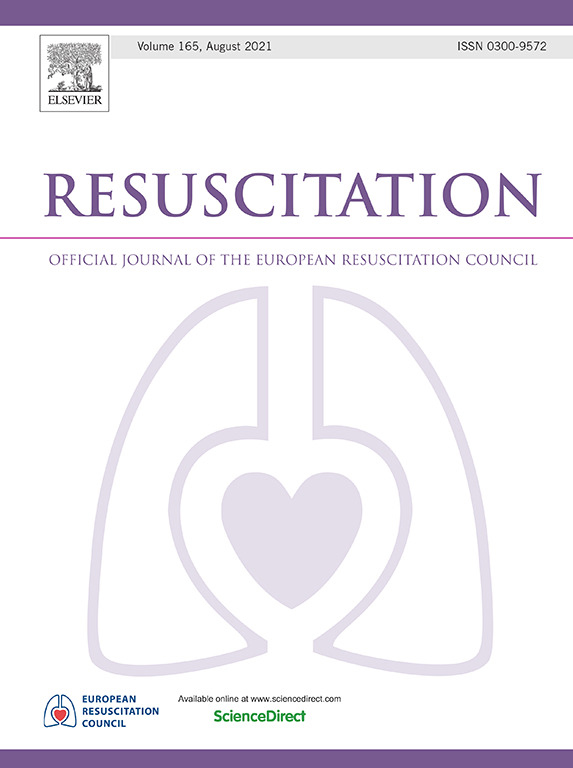瞳孔直径对无反应性瞳孔患者院外心脏骤停后病情严重程度及预后的影响
IF 4.6
1区 医学
Q1 CRITICAL CARE MEDICINE
引用次数: 0
摘要
瞳孔光反射(PLR)缺失被认为是心脏骤停后预后不良的一个指标;然而,很少有研究报道瞳孔大小。我们评估了瞳孔大小和自发循环恢复(ROSC)后立即反应性与停搏后疾病严重程度和临床结果之间的关系。本文章由计算机程序翻译,如有差异,请以英文原文为准。
The impact of pupil diameter on assessing illness severity and outcome after out-of-hospital cardiac arrest in patients with unreactive pupils
Background and purpose
Absent pupillary light reflex (PLR) has been implicated as an indicator of poor prognosis following cardiac arrest; however, few studies report on pupil size. We evaluated the association between pupil size and reactivity immediately following return of spontaneous circulation (ROSC) and post-arrest illness severity and clinical outcomes.
Methods
In this retrospective, single-center study between 2018 and 2024, out-of-hospital cardiac arrest (OHCA) patients with early pupil size and reactivity data were identified. Dilated pupils were defined as 4 mm in diameter. Pupil size and reactivity were subjectively assessed by the clinical team and documented as part of the standardized note template. We evaluated the association between post-ROSC pupil size, reactivity and illness severity, clinical outcomes.
Results
In our cohort of 382 OHCA patients, 50.8 % had absent PLR (n = 194). Patients with absent PLR were younger, had less premorbid medical conditions, worse cardiac arrest features, and higher illness severity. The false positive rate for absent PLR was 10.9 % for mortality and 5.9 % for poor neurologic outcome. Amongst those with absent PLR, dilated pupils were present in 68 % (n = 132). Patients with absent PLR and dilated pupils were younger, had less premorbid medical conditions, were less likely to have a shockable rhythm arrest, had higher illness severity scores and worse post-arrest labs. Patients with absent PLR and dilated pupils had a higher incidence of brain death (34.8 % vs. 9.7 %, p < 0.001). Amongst patients with absent PLR, the presence of dilated pupils improved the prediction of brain death [ AUC (CI) 0.733 (0.672–0.793) vs. 0.683 (0.628–0.738), p = 0.026].
Conclusion
Absent PLR immediately following ROSC is associated with poor outcomes but does not preclude good outcome. Pupil size and reactivity immediately post-ROSC may help to differentiate brain injury phenotypes. Prospective work using quantitative pupillometry is important to validate our findings.
求助全文
通过发布文献求助,成功后即可免费获取论文全文。
去求助
来源期刊

Resuscitation
医学-急救医学
CiteScore
12.00
自引率
18.50%
发文量
556
审稿时长
21 days
期刊介绍:
Resuscitation is a monthly international and interdisciplinary medical journal. The papers published deal with the aetiology, pathophysiology and prevention of cardiac arrest, resuscitation training, clinical resuscitation, and experimental resuscitation research, although papers relating to animal studies will be published only if they are of exceptional interest and related directly to clinical cardiopulmonary resuscitation. Papers relating to trauma are published occasionally but the majority of these concern traumatic cardiac arrest.
 求助内容:
求助内容: 应助结果提醒方式:
应助结果提醒方式:


